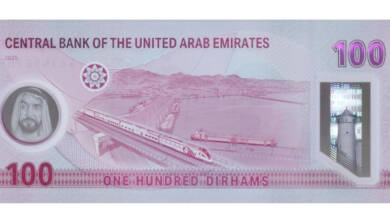The Abu Dhabi National Oil Company announced a partnership with oil companies Royal Dutch Shell PLC, BP, Total Gas & Power and others to establish Intercontinental Exchange Futures Abu Dhabi.
The new price marker is expected to come online the first half of this month on the Abu Dhabi Exchange and will offer futures, swaps and options for Murban, which is the light, sweet crude that makes up 56% of all crude recovered in the United Arab Emirates.
The project is being hailed as step toward more liquid and transparent markets in the region as Murban moves away from retroactive contract pricing to a market-driven forward spot rate. The ICE Murban Futures will be a physically delivered contract with delivery at Fujairah in the UAE on a free on board basis.
In addition, the Supreme Petroleum Council of Abu Dhabi has lifted destination restrictions for Murban, making it even more competitive on the international market.
This move by ADNOC is a step forward toward their goal of become a more modern and competitive energy company, which has typically been one of the most conservative oil companies in the region.
It will allow ADNOC to maximize value on every barrel of oil, allow their customers to better hedge risk and will upgrade Abu Dhabi’s status as a global energy hub.
Having the projected spearheaded by such reputable commodity traders such as BP and The Vitol Group has shown that traders are eager for a bench marker for the region.
It will allow traders to better hedge price risk in the region compared to Brent, the default international benchmark, and will create more price transparency compared to retroactive pricing.
The new spot price could have serious knock on effects on Brent, which moved drastically late this year due to political risk in the region.
With Murban being a better price indicator for the region, any political risk in the gulf would be absorbed more by Murban futures than Brent, as Brent would no longer be the sole exchange for traders to bet and hedge on Arabian oil.
The effect of a competitive exchange for Murban would have a limited effect on West Texas Intermediate as it is less effected by geopolitical events in the middle east than Brent. WTI has been a primary indicator for the American, and to a lesser extent, Canadian oil markets.
A regional benchmark has been tried and failed in the pass with the Dubai and Oman futures market, which was launched in 2007 and currently operated by the Dubai Mercantile Exchange.
However, Omani Crude is a heavy-sour crude, and is traded at a discount due to the shipping and refining costs that come along with heavier crudes.
For this reason, Oman Oil Futures faced difficulty becoming a benchmark due to weak demand for such crudes.
Murban on the other hand is a very light, sweet crude with a makeup similar to Brent and WTI, that could make it a highly sought-after commodity on the futures market once launched.
Only time will tell if Murban will be a global benchmark that can compete with the Brent-WTI duopoly.
One of the primary major movements in the market was that China’s crude oil imports reached a record high at the end of October rising 11.5% from last year.
However, natural gas imports to China have reported a 10.6% year on year fall at the end of October, which is its first decline since November 2016.
This has led to fear in the U.S. markets that the natural gas boom may be on the decline.
These reports display the fact that Asian markets may not have as much demand for natural gas as predicted.
As many new projects are now coming online, a lack of demand could create a supply gap, making a price crash likely to follow.
Approximately two months after the attack on oil processing facilities in Saudi Arabia, which caused a 15% spike in price to $69.02, Brent crude oil prices adjust back into a range of $59.62 to $62.96 as of Nov. 11.
Many oil producers are generating negative free cash flow, and a slowdown in the growth of oil production is in consideration.
Low oil prices, although detrimental to oil producing companies, benefit downstream petroleum refiner companies.
Over 470 petrochemical plants were announced globally in 2018. China’s capital expenditure total $52 billion, funding 240 plants with a total expected capacity of 100 metric tons per annum by 2026.
As for the United States, there are over 95 announced petroleum refinement projects, with a total expected capacity of 67 MTPA by 2026.
By David Dacus, Conor Houston, Kynthia Lee, and Evans McIntyre




